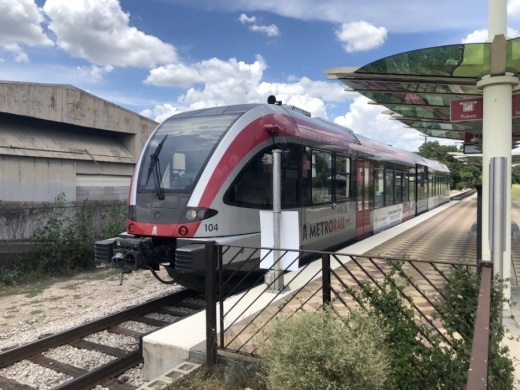Project Connect, the name Capital Metro has given the plan, would, among other changes, add light rail lines connecting neighborhoods in the northern, southern, and southeastern areas of Austin—all converging in a downtown tunnel that would separate the trains from traffic.
The public transportation agency's board has signed off on the plan, putting the next decision in the hands of Austin City Council. By August, council is set to decide on where it wants to set its tax rate to pay for the construction and operation of the new transit system, a question it would then send to the voters.
On July 22, Capital Metro staff presented a new option to the community for financing the plan—one that would not require every aspect to be paid for all at once. Instead, City Council could call an election to raise the tax rate enough to initially pay for about 70% of the total local funds needed, or $3.85 billion, leaving about $1.65 billion in local dollars to be funded at a future date.
Dave Couch, Project Connect program manager for Capital Metro, said the entirety of the system cannot be built at one time, so whether city leaders and voters decide to go with a phased approach or not, the new system will improve the way Austin commuters get around.
"I believe whether we move forward with the full plan at this point, or whether we moved forward with basically an initial investment, that this is an absolutely super investment for the city. I believe the city is very much in need of this type of transit plan." Couch said.
Peck Young is a longtime Austin political strategist and the executive director of Voices of Austin, a new group that also includes former state Sen. Gonzalo Barrientos and former Austin City Council Member Ora Houston calling for a new direction from local government leaders.
Young said the cost of light rail to Austin property taxpayers—the three originally proposed rail lines and the tunnel account for $8.7 billion of Project Connect's total $10 billion investment—is not worth the return.
"I personally think, and most of the people I'm working with think, that there is no sound reason Austin should get stuck with an expensive subway here at the beginning of the 21st century, when most cities are having issues with maintenance and operating costs," Young said.
According to a survey performed by the Sherry Matthews Group in May, 95% of Austinites polled have a positive view of Project Connect, and 71% said they would still maintain their level of support after considering the property tax impact.
If City Council moves forward with the phased approach, the tax rate increase needed to fund the initial phase would be about 8.5 cents per $100 of valuation, down from the approximately 11 cent increase needed to fund the plan fully.
That initial investment would leave a $1.7 billion extension of the Orange Line light rail in North Austin from the Tech Ridge station to the North Lamar Transit Center and in South Austin from Slaughter Lane to Stassney Lane to a future funding decision. In the meantime, those routes would be replaced with MetroRapid buses.
The initial investment plan would also construct the Gold Line, which is proposed as a light rail line from Austin Community College's Highland campus to the South Congress Transit Center, as a bus route, with the ability to upgrade it later to light rail. According to Capital Metro staff, that change would also decrease the initial cost of the underground station, knocking it down from $2.5 billion to $2 billion.
According to the city, all financing options would be on the table in the future to fund the remaining pieces of the project should the phased approach move forward. That would include grants, existing funds, public-private partnerships and voter-approved tax revenue.
The projections Capital Metro staff have put forth are reliant on 45% of the overall $10 billion cost being covered by the federal government, which, according to Couch, matches what other cities have been awarded in the Federal Transit Administration's New Starts Program.
To receive those funds, Couch said, Austin has to prove to the federal government its plan does not have a detrimental impact on the environment, that local funding is available, and that the plan will benefit the community. The FTA then gives the plan a rating, which allows Austin to enter the competition with other cities for the federal dollars.
The next step in the process will come July 27, when City Council and the Capital Metro board of directors meet in a joint session and city staff will make a final recommendation on an investment package.
Editor's Note: A correction has been added to update the correct end points of the Orange Line extensions in North Austin and South Austin.





